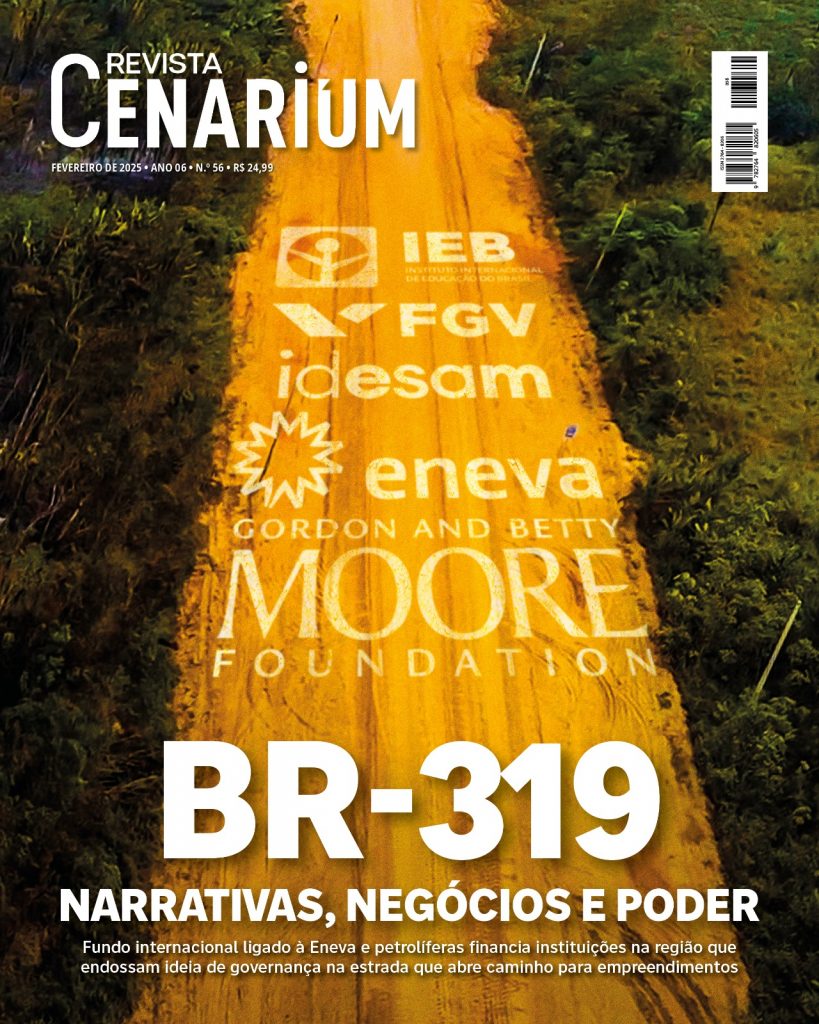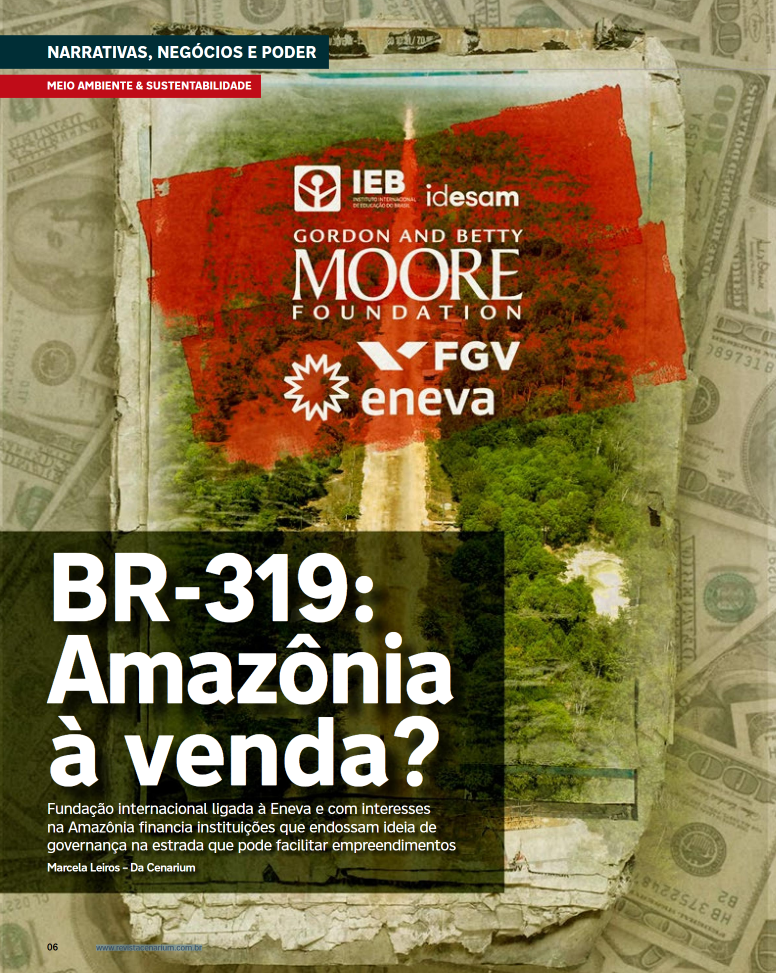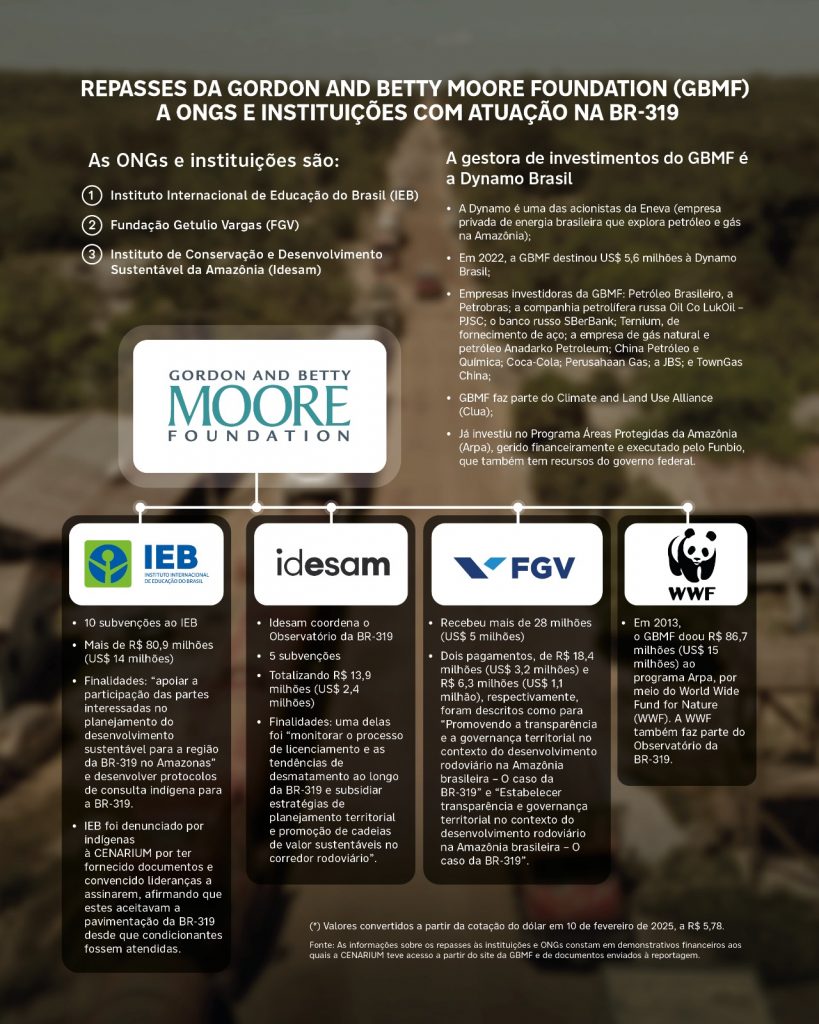International media highlights CENARIUM report on BR-319
24 de March de 2025

By Letícia Misna – From Cenarium
MANAUS (AM) – The digital/print edition of CENARIUM MAGAZINE published the report “Amazon for Sale? BR-319: Narratives, Business, and Power”, which exposed Non-Governmental Organisations (NGOs) and institutions operating on BR-319 that received millions from an international institution linked to enterprises impacting the forest. This report gained prominence in the British media after being referenced by the UK-based website The Canary.
Authored by journalist Monica Piccinini, the article “BR-319: paving the way for Indigenous displacement and environmental catastrophe” was published this Monday, the 24th, highlighting that the road serves as a catalyst for environmental destruction.

“The reconstruction of the BR-319 highway in the Amazon, one of the world’s most environmentally harmful projects, serves as a catalyst for these destructive activities. Stretching 885 km, the road connects the capital of Amazonas, Manaus, to Porto Velho, cutting through untouched areas of the rainforest. A proposed 408 km reconstruction would open a gateway to deforestation, crime, and corporate exploitation, directly impacting over 18,000 Indigenous people,” states a passage from the publication.

The article directly cites CENARIUM’s publication, recalling that Indigenous people denounced that the NGO Instituto Internacional de Educação do Brasil (IEB) had produced a document stating that the Indigenous peoples of Lago Capanã Grande and Baetas, near BR-319, accepted the road’s paving as long as certain conditions were met. However, the Indigenous people firmly disagreed with the project.
“The matter was further detailed in the article BR-319: Narratives, Business, and Power, published by Revista CENARIUM in February. According to the article, the NGO Instituto Internacional de Educação do Brasil (IEB) falsely claimed that the Indigenous community had been consulted and had agreed to the reconstruction of the highway, provided that an extractive reserve was created to protect them. Shockingly, the community only became aware of this supposed approval after signing the document,” the journalist points out in the article.

The text also highlights an event at Universidade Federal do Amazonas (Ufam), organised by researcher Lucas Ferrante, which gathered the Federal Public Ministry (MPF), the Ministry of the Environment and Climate Change (MMA), Indigenous leaders, and CENARIUM itself. On this occasion, aggravating situations regarding BR-319 were presented and discussed.
“This concerning situation arose during an event at the Universidade Federal do Amazonas (Ufam), attended by the Federal Public Ministry, a representative of the Ministry of the Environment, an NGO, and Indigenous leaders. The meeting was organised by researcher Lucas Ferrante and covered by Revista CENARIUM,” the article states, further emphasising the importance of the Amazon, the destruction of the “flying rivers”, violations of Indigenous rights, and the threat to the region posed by agribusiness.

The text asserts that with BR-319, both Indigenous communities and the planet are at risk.
“The reconstruction of BR-319 is not just about a road – it is a dangerous move that could destroy centuries of heritage and harm the environment beyond repair. If Brazil follows this path, the damage will be permanent, leaving deep scars on the land, its people, and the world,” it states.

Special Report
The report “Amazon for Sale? BR-319: Narratives, Business, and Power” was the cover story of CENARIUM Magazine’s 56th edition, published in February. The material revealed that NGOs and institutions operating along BR-319, the road connecting Amazonas to Rondônia, received over R$122.8 million from the Gordon and Betty Moore Foundation (GBMF) over 15 years. This foundation is linked to companies that harm the Amazon Rainforest, such as Eneva S/A.

The NGOs identified as direct recipients of international corporate funds and involved in governance projects on BR-319 are the Instituto Internacional de Educação do Brasil (IEB), Fundação Getulio Vargas (FGV), and the Instituto de Conservação e Desenvolvimento Sustentável da Amazônia (Idesam). Financial statements also reveal a GBMF donation to the Amazon Protected Areas Programme (Arpa), made via the World Wide Fund for Nature (WWF).

The investigation was conducted over six months by the magazine, which obtained access to documents and data available on GBMF’s own website, proving the fund transfers.

